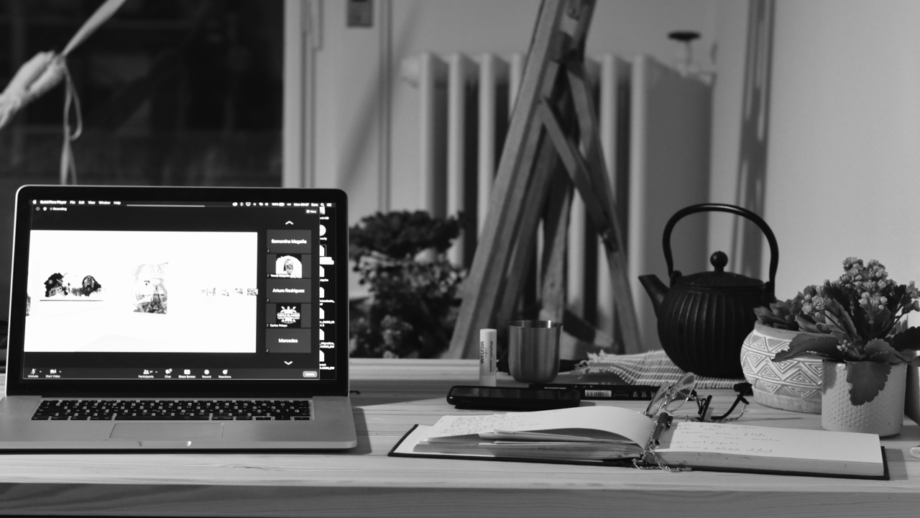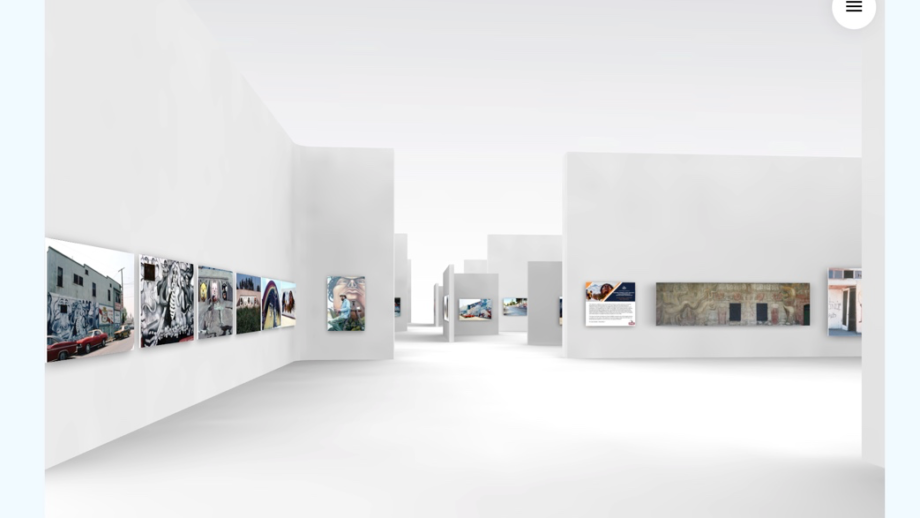From Street Art to Internet
Thoughts on Digital Ethnography
My PhD research[1] on mural street art in Los Angeles (USA) focuses on the relations between urban artivism and the appropriation of urban space, the creation and reshaping of space and history, as well as the limits and scopes of artistic production in the context of political and social crisis. I had planned an intense fieldwork of ten months, starting spring 2020, which consisted in participant-observation, in-depth interviews, and muraling with artivists in Los Angeles. Artivism combines Art and Activism; artivists looks for artistic and creative expressions to achieve their political goals, or to express their concerns (Malzacher 2014).
Murals are often seen as an empowering expression of the communities. They play an important role in developing solidarity and political debate, especially in marginalised and migrant communities (see Arreola 1984; LaWare 1998; Donahue 2011; Bloch 2012). At the same time, murals contribute to increase the value of certain neighbourhoods, hence accelerating the gentrification processes (Lin 2019). In the case of Los Angeles, I have found a strong relationship between art and place: On one hand, the city itself finances mural artists to beautify certain neighbourhoods, while independent organisations and artists take over the walls in their neighbourhood to convey their messages. By doing so, they reclaim and build those places as their own.
By the end of March due to the outbreak of SARS-CoV-2, I started working from home like most of my colleagues. Instead of walking down the streets and examining closely the correlation between Mural Art and sense of belonging, I was looking at the walls of Facebook and Instagram.
Notes from the field

Image 1: Digital Ethnography. Photo: Sara Wiederkehr.
18 March 2020: After some delays with the visa and research permit, I was finally going to start my fieldwork in situ. But the timing for resolving the bureaucratic issues could not be worse.
15 March 2020: USA barred the flights from the Schengen countries. I rescheduled my appointments, unpacked my suitcases, and sat down with a cup of coffee to read the news and look for an alternative way of continue with my research, not knowing how long this situation would prevail. Local rhythms, dynamics, discourses and practices are keys to understand social relationships between mural art and space, and personal contact with the people on the field is the basis of my anthropological research. Therefore, to access the field only through Internet obliged me to a radical change of methodology.
From the Streets to the Net
How do the artivists build their place in a virtual space?
Confined under strict measures and undergoing difficult times in economic, political and social terms, mural artists and social activists based in Los Angeles turned more intensely to the Internet with their voices and actions. Under lockdown and away from the streets, online presence became more urgent and necessary.
When I first wrote my PhD project, I proposed that the city becomes a scenario where belongings are being performed, and the stains of its walls can be interpreted as a “visual history of marginalized groups” (Tsilimpounidi 2015:18) (Wiederkehr 2019). Therefore, considering that through the use of space to express political and social claims, artivists act it, and the wall becomes not just means of expression but part of the discourse itself, the shift to the online spaces that we have seen in the last months enlarges the lived environment: The local walls are no longer the only canvas, nor the people walking by are the only audience. Artists and activists have regularly documented their work to share it online. However, the local place remains the space to which the artists and activists come back and to which they direct the actions and discourses.
1 October 2020: I register for the virtual opening of the exhibition Signs from the heart: California’s Chicano Murals organized by SPARC in LA. The Social and Public Art Resource Center (SPARC) was founded in the 1970s by Christina Schlesinger, Donna Deitch, and Judith Baca, inspired by the Chicano art movement. Baca continues as a director today in its mission to produce, preserve, and promote activist and socially relevant artwork –especially mural art in the public spaces, as part of the city’s collection.

Image 2: Screenshot of the virtual Exhibition ‘Signs from the Heart: California Chicano Murals Virtual Exhibition’, Sparcinla.org.
The exhibition starts at 6pm in Los Angeles; I have to be ready at 3 am.
I enter the Zoom room and see unfamiliar faces. Judith Baca and Pilar Castillo tell the story of the Chicano Murals in LA, while I see, for the first time in “real-life”, the murals that shaped LA’s history. There are as close as they have ever been. This enables me to see the art pieces and listen to the stories directed to a larger audience in times of confinement. I remain a silent observer.
45 minutes after the event started, my daughter wakes up and refuses to go back to sleep alone. I record the event with Quicktime to watch it again in normal working hours, when she is at the kindergarten.
I have the feeling that this pandemic and the subsequent lockdown changed the dynamics of social life, the way we approach social spaces and gatherings, the way we interact and get to know each other. It also challenged the way we enter the field, how we anthropologists approach the participants and the way we build a relationship with them. At the same time, it changed the way the artivists produce their work and socialize it, and how spectators respond.
Some thoughts come to my mind:
- A new social context is introduced: An online tour like this would not have been organized before the Lockdown: The audience would have gone to the Gallery. Perhaps the event would have been streamed;
- In a real-life event, visitors would gather around the aperitif and exchange comments in small groups whereas in this event the exchange embraced everybody vis-à-vis the screen, the exchange got unrestricted;
- But if this tour was to be hold only offline, I would not have had the opportunity to participate. I would not have known about it, probably;
- In a real-life event, my daughter would have enjoyed the artworks and listened to the persons, or played around the gallery. We would have left when the event was over.
- The Internet enables the proximity to events happening far away and the communication with people far away from us. At the same time, it constructs distance and silence.
Virtually embodied presence
If we understand the digital, “not as an object of study, but as a methodological approach, founded in participant observation, for investigating the virtual and its relation to the actual… we can no longer treat the virtual and the physical as distinct or separate” (Boellstorff, 2012: 40).
When the borders of the USA closed, and the city was under Lockdown, Cyberspace became the space where social processes were happening, where people shared their thoughts, hopes, fears, recipes, and projects. A safe place where to socialise. At the same, it became the place were artists and activists were performing.
Street art was shared and posted online as it was prior painted on the walls of the streets. Before the lockdown, it was not unusual for artists and activists to use their social media profiles to connect with their followers and show their work. When the streets were banned, Internet became thus the space to engage, argue, and perform. Simultaneously, the Internet became the only media possible for my research.
I have long lost my daily routines of 7 hours’ sleep from 11pm to 6 am. I am living in a newly formed time-space from where I study a newly formed space: muraling in the walls of Facebook and Instagram in times of a Pandemic. Observing through the screen and reaching out to people via comments and emoticons. Waiting for their responses in a 9 hours’ difference timeframe, not knowing them in real life and trying to understand a city I have never seen.
I feel a distance. Yet at the same time, I am always watching, scrolling through the social media feeds and the news, always participating in the cyberspace where the action is being published –or taken place–, and the field –9.489 kilometers away- is suddenly reachable –yet still so far.
According to Christine Hine, in an interview with Sharika Thiranagama for Standfords’ Doing Ethnography Remotely, to be online and to have the ethnographic experience online is not only about collecting data, but about “dwelling into that experience of immersion and opening up to that affective experience… how it feels to get a sense of somebody else being there in that space…” (Hine 2020)
Now, I am always looking for that affective experience through the screen, from the other side of the Ocean, trying to understand how murals are performed in times of crisis in a city where the sun shines and the temperature reaches 35°C while I drink my hot tea and see the rain through the window, on this cold Friday afternoon of autumn.
Written on 6 October 2020 and revised on 10 October 2020.
Sara Wiederkehr was born in Bogotá, Colombia where she studied Anthropology. Currently, she is a Ph.D. Candidate in Anthropology and a member of the ERC Artivism project: “Art and Activism. Creativity and Performance as Subversive Form of Political Expression in Super- Diverse Cities”, under the supervision of Prof. Monika Salzbrunn, at the Université de Lausanne, Switzerland. She is interested in the use and role of visual images in war, and social and political conflicts, and on alternative narratives in anthropological research. Sara is based in Lausanne, Switzerland, where she lives with her daughter.
Contact: Sara.wiederkehr [at] unil.ch
Footnotes
[1] Which is part of the ERC project Artivism: Creativity and Performance as Subversive Form of Political Expression in Super-Diverse Cities, directed by Prof. Monika Salzbrunn
References
Arreola, D.D. 1984. ‘Mexican American exterior murals.’ Geographical Review 74.4, 409–24.
Bloch, Stefano. 2012. The Changing Face of Wall Space: Graffiti-murals in the context of neighbourhood change in Los Angeles. Dissertation. University of Minnesota
____________. 2020. COVID Graffiti. Sage Publications. Crime Media Culture: 1-9.
Boellstorff, T., George, E., Nardi, B., Pearce, C., & Taylor, T. (2012). Ethnography and virtual worlds: A handbook of method. Princeton, NJ: Princeton University Press.
Donahue, D. M. 2011. ‘Connecting classrooms and communities through Chicano mural art’. Multicultural Perspectives, 13, 70-78.
Hine, Christine. 2020. Online Interview with Sharika Thiranagama. Doing Ethnography Remotely. Stanford University Center for Global Ethnography. https://iriss.stanford.edu/doing-ethnography-remotely?fbclid=IwAR0iTb0ghcZB7ge1CAbtL6Osx_nQ1HCULAzTfUo9vOx4s2feSPGAklnozaI. Last access: 1/10/20
LaWare, M.R. (1998). “Encountering Visions of Aztlán: arguments for ethnic pride, community activism and cultural revitalization in Chicano murals.” Argumentation and Advocacy, 34.
Lin, Jan. 2019. Taking Back the Boulevard: Art, Activism, and Gentrification in Los Angeles. New York: New York University Press
Malzacher, Florian. 2014. ‘Putting the Urinal back in the Restroom. The Symbolic and the Direct Power of Art and Activism’. Truth is Concrete. A Handbook for Artistic Strategies in Real Politics. (Eds. steirischer herbst & Florian Malzacher). Berlin: Sternberg Press. 12-25
Salzbrunn, Monika. 2015. ERC-ARTIVISM proposal: Art and Activism: Creativity and Performance as Subversive Forms of Political Expression in Super- diverse Cities. ERC-CoG-2015-681880
Self Help Graphics & Art. Facebook Profile. 20 July 2020
SPARC. Instagram Profile. 23 July 2020
SPARC. Instagram Profile. 24 September 2020.
Tsilimpounidi, M. 2015. “If These Walls Could Talk”: Street Art and Urban Belonging in the Athens of Crisis. Laboratorium, 7(2), 18-35.
Wiederkehr, Sara. 2019. Through art and politics: social imaginaries in the streets – An Anthropological approach to mural art in Los Angeles, California. PhD Proposal. Université de Lausanne, Suisse.































